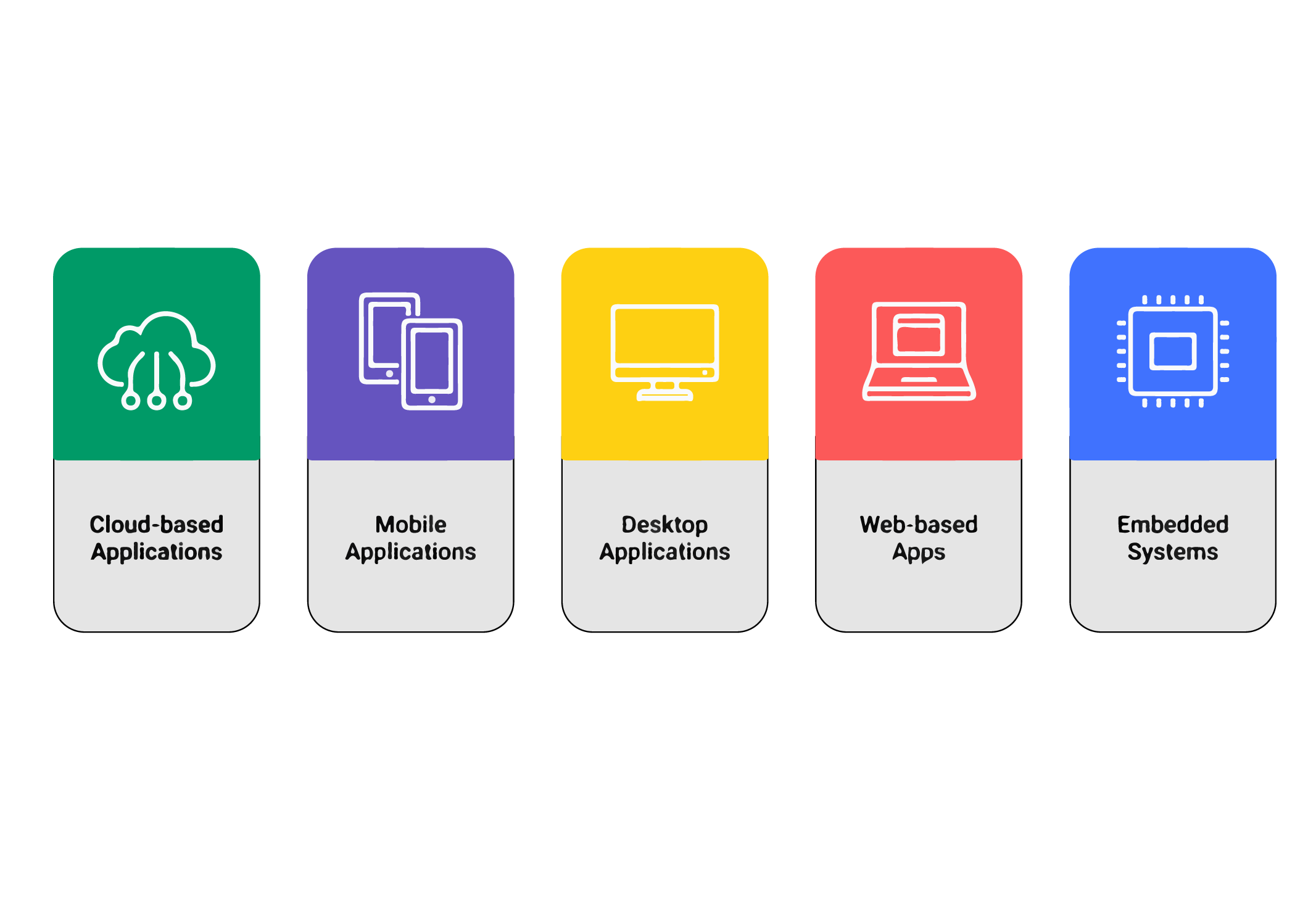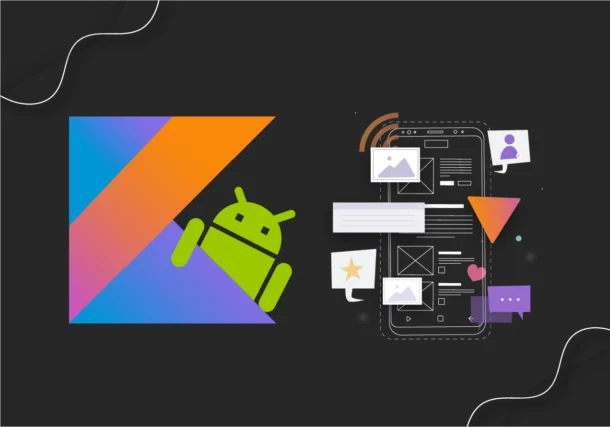A Strategic Comparison of Kotlin Vs Java for Modern Business Development
The direction of business development is greatly influenced by the programming language selection. Of all the possibilities, Kotlin and Java are two of the most well-known, with distinct advantages and functionalities. Since its 2011 release by JetBrains, Kotlin has been more popular because of its cutting-edge functionality, short syntax, and smooth Java integration. Meanwhile, business software development still relies heavily on Java due to its strong ecosystem and established reputation.

It is impossible to exaggerate how crucial it is to choose the correct language since it has an immediate influence on things like software development speed, scalability, and maintainability. Therefore, in order to make decisions that are in line with their corporate objectives and growth goals, organizations need to carefully weigh the advantages of Kotlin and Java.
The goal of this comparison guide is to make sense of the subtle differences between Java and Kotlin in the context of contemporary business development. Through an examination of their distinct features, performance attributes, ecosystem assistance, and community acceptance, enterprises may get significant knowledge of the most appropriate language for their requirements.
This guide’s ultimate goal is to arm decision-makers with the information they need to successfully negotiate the linguistic terrain. Knowing the relative advantages of Kotlin Vs Java is crucial for promoting creativity, effectiveness, and success in today’s cutthroat business climate, whether you’re starting a new project or thinking about a migration plan. Lets delve into an interesting journey of Kotlin Vs Java.
Traversing the Historical Arc, Key Features, and Business Applications of Java
As a mainstay of programming languages, Java has come a long way since its creation and is now considered essential to contemporary software development. When Java was first created at Sun Microsystems in the middle of the 1990s, James Gosling and his colleagues had the goal of creating a language that could operate on every platform. With the introduction of Java 1.0 in 1996, a new chapter in the history of software development was written.

With each new edition bringing improvements and upgrades to match the changing demands of developers and enterprises, Java has experienced tremendous change throughout time. With each new release, the language has adapted to include contemporary programming paradigms and best practices, from the addition of features like generics, annotations, and lambdas to the acceptance of modularity with Java 9.
Java’s timeless appeal is characterized by a few key elements. Cross-platform development is made easier by its platform independence, which is made possible by the Java Virtual Machine (JVM). This allows developers to create code once and run it anywhere. Time-to-market is shortened and development is streamlined by the abundance of pre-built classes and utilities offered by Java’s rich standard library. Further factors that make Java dependable and maintainable are its robust type system and extensive tool support.
Due to its dependability and adaptability, Java has been widely used in a variety of use cases and industries. Java is used in business development to power a wide range of applications, including backend systems, mobile apps, and corporate software in addition to online applications. For mission-critical applications in sectors like banking, healthcare, e-commerce, and telecommunications, its scalability, performance, and security capabilities make it an excellent choice.
Java’s meteoric rise from its humble beginnings to its current position as a key technology in contemporary software development is evidence of its ongoing applicability and flexibility. Java continues to influence the digital environment and enable businesses to innovate and prosper in a constantly changing market because of its rich history, extensive feature set, and broad acceptance in business development.
Language’s Overview, Evolution, and Business Adoption Trends of Kotlin
Rising to prominence in the programming world, Kotlin is well-known for its cutting-edge functionality, succinct syntax, and smooth integration with current Java codebases. Kotlin, which was first created by JetBrains in 2011 as a Java substitute, has quickly acquired popularity due to the Android community’s and well-known tech businesses’ adoption of it.

The formal launch of Kotlin in 2016 was a pivotal point in its ascent to widespread use, and it represents the beginning of its history. Since then, JetBrains has regularly released updates and added new features to Kotlin in an effort to improve developer happiness and efficiency.
Kotlin’s pragmatic approach to programming, which strikes a balance between safety and expressiveness, is one of its main features. Null safety, data classes, and extension functions are examples of features that make typical programming jobs easier to do and reduce the risk of mistakes. Furthermore, developers may create more succinct and expressive code because of Kotlin’s support for functional programming structures like lambdas and higher-order functions.
Kotlin’s smooth compatibility with Java is another noteworthy breakthrough. Within the same project, Kotlin and Java code may live together, enabling developers to progressively switch from Java to Kotlin while utilizing pre-existing Java libraries and frameworks. Kotlin’s popularity has been fueled by its interoperability, especially in the Android development community, where it has become the go-to language for creating Android applications.
With more businesses integrating Kotlin into their IT stacks, the language has been steadily gaining traction in terms of adoption patterns in business development. Organizations of all sizes, from startups to IT behemoths, are seeing the advantages of Kotlin in terms of overall project success, developer productivity, and code maintainability.
From its beginnings to its present position as a top programming language, Kotlin’s path illustrates its increasing importance in the field of software development. With its cutting-edge features, practical methodology, and broad usage in business development, Kotlin is breaking new ground and enabling programmers to create reliable and creative software solutions.
A Holistic Comparative Analysis of Kotlin Vs Java; Deciphering the Code
Selecting between Kotlin or Java in the gadget-oriented world of programming languages necessitates a careful side-by-side comparison of the two. This review between Kotlin Vs Java covers a wide range of topics, each of which is critical in assessing whether or not these languages are appropriate for use in the contemporary development environment. These topics include syntactic readability and expressiveness, performance benchmarks, tools ecosystems, interoperability, and community support.
A comparison of syntax demonstrates how expressive and condensed Kotlin is, providing developers with a more efficient and understandable writing experience than Java. Modern Kotlin features like null safety and extension functions help to improve code readability and decrease the chance of mistakes, which increases productivity.
Performance comparison examines several aspects such as resource usage, runtime performance, and compilation speed. Although Kotlin and Java both perform similarly during runtime execution, Kotlin is a better option for projects where quick iteration and deployment are critical due to its faster compilation time and effective resource management.
Tooling and ecosystem comparison looks at what libraries, frameworks, and development tools are available in the ecosystems of both languages. While Kotlin’s compatibility with Java ensures seamless integration with existing Java codebases and libraries, Java boasts a vast and mature ecosystem with a wide array of libraries and frameworks. This gives developers access to a rich ecosystem while taking advantage of Kotlin’s modern language features.
Kotlin’s smooth compatibility with Java is highlighted by interoperability, which is a crucial factor for companies with existing Java codebases. Kotlin or Java code may readily coexist in the same project, facilitating integration and progressive transfer without upsetting workflows or dependencies already in place.
Language development and uptake are greatly influenced by future prospects and support from the community. Kotlin’s expanding community and support from significant tech businesses portend a bright future for the language, with more improvements and acceptance expected in the years to come. Java, on the other hand, has a long history in the industry and is well supported by the community.
Kotlin vs Java Dilemma for Business Development Success; Deliberate Decision-Making
For business growth, there are a number of crucial aspects to take into account while deciding between Kotlin and Java. There must be a question rising in the mind that which is the best one in Kotlin Vs Java. Businesses must first evaluate the requirements of their particular projects, including performance, scalability, and compatibility with current systems. For applications needing quick development and interaction with older codebases, Kotlin’s contemporary features and smooth Java compatibility make it a desirable choice. However, for bigger, enterprise-level projects with complicated needs, Java’s stable ecosystem and wide tooling support could be more advantageous.
Case studies and success stories offer insightful information on how companies have used Kotlin Vs Java to accomplish their development objectives. Companies that have effectively used Kotlin for Android app development include Pinterest and Slack, which report gains in code quality, developer efficiency, and app performance. Likewise, well-known companies like Netflix and LinkedIn still use Java for their vital backend systems, demonstrating the language’s resilience and scalability in high-demand settings.
In the end, suggestions for deciding between Kotlin Vs Java should be customized to the particular needs of each company, taking into account factors like team experience, project objectives, and long-term planning. It could be wise for companies to continue with Java for continuity and stability if they have a large talent pool of Java programmers and have made significant investments in Java-based infrastructure. On the other hand, smaller teams and startups may choose to use Kotlin in order to obtain a competitive advantage and shorten time-to-market because of its current language features and productivity advantages.
In the Kotlin vs Java conundrum, strategic decision-making necessitates a sophisticated comprehension of the trade-offs and factors involved. Through meticulous consideration of variables including project specifications, successful implementation case studies, team knowledge, and business objectives, enterprises may arrive at well-informed judgments that facilitate innovation and development success in the swiftly changing digital terrain.
Innovating with Kotlin vs Java: Choosing Pattem Digital for Business Success
Knowing the main distinctions between Kotlin Vs Java is essential for navigating the differences between the two languages. It’s critical to match language selection to development requirements and commercial goals, taking into account aspects like compatibility, performance, and scalability. With its proficiency in both Java and Kotlin development services, Pattem Digital guarantees customized solutions that achieve your company’s objectives. In order to promote innovation and expansion in contemporary corporate development, we strongly advise further research and experimentation with these languages. Having Pattem Digital as a partner gives you access to a group of people committed to using the always-changing world of programming languages to advance your company.





